Heartburn and Reflux, a Naturopathic Perspective by Kaila Sellars, ND
Do you experience burning, aching discomfort in the middle of your chest or often have an acid taste in your throat or mouth? Do you regret eating spicy foods, tomatoes, coffee or chocolate? If so, then you may have a common problem called heartburn, or gastroesophageal reflux. Reflux happens when the lower esophageal sphincter (LES) does not close properly or completely after swallowing, allowing acid from the stomach to reflux into the esophagus where it doesn’t belong. This causes discomfort and irritation to the esophagus and the symptoms of heartburn.
There are several reasons why heartburn may occur, including the counterintuitive reason of LOW stomach acid. Low stomach acid tends to occur with age, and also with stress to the digestive tract, especially with consumption of processed foods, foods that upset your stomach, and if you have food intolerances.
The tone or tightness of the lower esophageal sphincter is triggered by the acid in your stomach. Normal stomach pH is between 1 and 4. If the pH rises, or becomes less acidic, then this sphincter does not have the stimulation it needs to function properly.
Using antacids, or acid blocking medication, decreases the amount of stomach acid, which is helpful to reduce irritation to the esophagus. However, now you understand why this could lead to more reflux!
Long term use of antacids is associated with health problems such as low B12, osteoporosis, and, more seriously, GI infections, such as SIBO or C. Diff. They may also affect your cardiovascular system by interfering with Nitrous oxide production.
It is important to address the underlying cause of any condition, and so it is the case with reflux. Other causes of heartburn can be eating too quickly, stress, excess abdominal weight, maldigestion or other digestive issues. There is also evidence that up to 40% of reflux could be caused by candida (yeast, that also causes thrush) that is present in the esophagus! This is more likely if you have taken antibiotics multiple times, eat lots of sugar, or have struggled with other yeast issues. The esophageal yeast is accentuated by the antacids, as well, and is very difficult to diagnose.
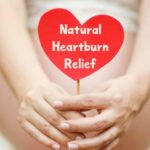 What can you do to resolve reflux? First, and foremost, nutrition is the place to start. Adding more fiber found in vegetables and whole grains, and nutrient packed foods, like fruits and veggies, encourages healthy digestion. Second, “meal hygiene” is important and starts with chewing. Each bite of food should be chewed thoroughly, to a nearly liquid consistency, before swallowing. Eating more slowly also helps. It takes about 20 minutes for your brain to catch up to your stomach, so eating slowly, and chewing, well helps to avoid overeating and aggravating the stomach. Try to drink water between meals, and less during the meal, to avoid diluting stomach acid while eating. Digestive bitters, made from bitter tasting plants, help to stimulate the stomach and pancreas and tonify digestion.
What can you do to resolve reflux? First, and foremost, nutrition is the place to start. Adding more fiber found in vegetables and whole grains, and nutrient packed foods, like fruits and veggies, encourages healthy digestion. Second, “meal hygiene” is important and starts with chewing. Each bite of food should be chewed thoroughly, to a nearly liquid consistency, before swallowing. Eating more slowly also helps. It takes about 20 minutes for your brain to catch up to your stomach, so eating slowly, and chewing, well helps to avoid overeating and aggravating the stomach. Try to drink water between meals, and less during the meal, to avoid diluting stomach acid while eating. Digestive bitters, made from bitter tasting plants, help to stimulate the stomach and pancreas and tonify digestion.
Heartburn may be common, but that doesn’t mean healthy or optimal. It doesn’t have to cause lifelong discomfort and pain – it can be treated by improving the overall function of your gastrointestinal tract. And your whole body will benefit.
Say goodbye to heartburn, Billings!
Becoming Pain-Free by Dr. Shelah Deans, ND

Dr. Shelah Deans, ND graduated from Bastyr University with a doctorate in Naturopathic Medicine. She is part of the team at Yellowstone Naturopathic Clinic as a first year resident, specializing in both family and regenerative medicine. She also has over 15 years experience in the health and fitness industry working with corporate executives, busy moms, and professional athletes in achieving their goals. Her passion is practicing evidence-based, integrative medicine while helping patients live their best life possible, preventing disease and mitigating pain.
Are aches and pains keeping you from living your best life? Struggling with nagging, old injuries that still bother you? This article will be a brief discussion on the science behind pain followed by various strategies at becoming pain-free.
Why does the body have pain and what is the purpose? To answer this, let’s use the analogy of a car. When something is wrong with the engine, what happens? The check engine light goes on, which lets the driver know that engine should be checked in order to prevent damage. Snipping the wire for the check engine light will remove the annoyance of having the light on, but that could increase the risk of destroying the engine. A better option is to open the hood and run diagnostics to figure out what is happening with the engine then appropriately address the concern. Likewise, pain is your body’s check engine light.
When discussing musculoskeletal pain, several chemicals are released and are linked to the sensation of pain, such as: histamines, prostaglandins, bradykinin, and most notably, Substance P. These chemicals cause nerves to fire and alert the body of injury, sending continuous, unrelenting pain signals. Thus a reasonable strategy to reduce or relieve pain is to alter these chemicals, while simultaneously addressing the underlying reason pain signals are being sent in the first place.
Since pain is complex and quite variable, there is no one-size-fits-all, so it’s important to have the correct diagnostics run (just as one would for their vehicle). Assessing musculoskeletal pain involves an evaluation of the joints and consideration of system-wide contributing factors. Once the underlying cause is determined, one can begin the strategic and individualized approach to relieving pain.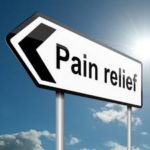
As for treatment, the options are seemingly endless and can include anything from vitamins to surgery. Here is a list of effective strategies for addressing pain: nutrition, exercise and corrective movements/physical therapy, and other physical modalities that are useful, such as: hydrotherapy, cold laser, infra-red light/laser, cranial sacral and visceral therapy, sound therapy, acupuncture, dry needling, perineural injections, and regenerative injection therapy (prolotherapy, platelet rich plasma, stem cells and stem cell derived products).
There are also supplements that aid in pain relief, which include vitamins and herbal medicine. And not to forget, homeopathy. So, as u can see, there are endless options. Not sure where to start? Wondering what’s right for you? This is a vast topic, which can be discussed with your health care provider and naturopathic doctor.
As always, wishing you joy on the journey and may you find the right path for you in becoming pain-free!
Seasonal allergies: The cause and what to do about it

Chris Ballantine, ND is a naturopathic resident at Yellowstone Naturopathic Clinic and St. Vincent’s Health Cancer Center of Montana.
We are amidst the time of year that seasonal allergies are ripe for blooming. Many people deal with this year after year with a barrage of symptoms, such as runny nose, watery eyes, sinus congestion, and generally not feeling well.
What are seasonal allergies?
Common sources of seasonal allergies are typically related to the growth of new plant life in the spring. Whether it be the pollen from that blossoming tree in your front yard, that wonderful aroma of freshly cut grass, the dust created from pulling weeds, or that bouquet of wildflowers from your secret admirer, the effects of allergies can be felt from a myriad of different triggers.
When someone who is vulnerable comes in contact with the offending source, certain compounds bind to the immune protein called immunoglobulin E (IgE). IgE receptors are commonly found on mast cells, but are also found on other types of immune cells, such as basophils and eosinophils. When allergic compounds bind to IgE receptors, this activates the mast cells, and thus signals the release of inflammatory mediators from these cells, such as histamine. People with chronic allergies develop an increased number of IgE receptors, which equates to increased sensitivity to allergens, thus having a lower threshold at which inflammatory mediators are released.
Mast cells can be thought of metaphorically in terms of a busy seaway with lots of sailboats sailing to and fro. The mast cells are the ships in this scenario, with their masts representing the IgE receptors. The ocean represents mucosal and epithelial cells, which are commonly found on the surface of our mouth, throat, respiratory, and digestive tracts- a common home for mast cells. When there is a lot of weather, birds, and other debris in the air, affecting the masts of these ships- the passage can be cumbersome and tumultuous- but is usually manageable. For the average ship there is no problem because they were built to handle the ocean life. Yet for the ships that have too many masts and debris on their bow or sterns, even the smallest wind can cause the ship to become topside, and thus spill its contents overboard.
What can you do?
In terms of this ship analogy, it’s important to not only clean up the air and environment to avoid the things that will affect the sailing efficacy of the ship, but also to secure the ship in the event that there is some adverse weather that would otherwise causes its contents to spill overboard. In your life this would involve minimizing outdoor activity when pollen is high and striving to keep the inside of your house as clean as possible. Air filters are useful here. It is also helpful to minimize foods that have higher levels of histamine, such as yogurt, cheese, wine, beer, tuna, pork, and spinach. There are foods and herbs that can be helpful to stabilize the ship in stormy weather by down-regulating masts cells. Examples include nettles, watercress, turmeric, chamomile, Brazil nuts, and apples- think of these as the cargo on the ship.
So next time you feel some allergy symptoms coming on try a cup of chamomile and nettle tea, spiced with some turmeric. There are other options to reduce the mast cell effect and the severity of your reactions. These are best individualized according to your personal health history and general health. Some effective natural options include mast cell stabilizing substances such as Cromolyn sodium, quercitrin and homeopathic drops for seasonal pollens, trees, grasses, dust and grasses.
Don’t suffer needlessly through the beautiful spring. There are more solutions to keep your ship sailing comfortably than you may know.
Dark Cocoa for Heart Month

Dr. Kaila Sellars, ND
What do you think of when you hear “chocolate” or “cocoa”? Smooth? Decadent? Rich? What about “bitter”?
Cocoa was first developed as a crop in many ancient South American cultures, the most well-known being the Aztecs and Mayans. There is evidence of cocoa-based food dating back several thousand years, and it is estimated that chocolate consumption reached 7.7 million metric tons in 2019!
Chocolate comes from the seeds of the fruit of a small evergreen tree called Theobroma cacao. Theobroma means ‘food of the gods’ in Latin, and cacao is derived from the Nahuatl (Aztec language) word xocolatl, from xococ (bitter) and atl (water). This name makes sense, because the seeds of the cacao tree are extremely bitter and must be fermented to develop flavor. Once fermented, the beans are dried and roasted. The shell is used to make cacao nibs, which are then ground to make cocoa mass. Nibs contain both nonfat cocoa solids and cocoa butter – this is what is referred to as “percent cacao” on food packaging. Chocolate liquor is the paste made from liquefying the cocoa mass/nibs. The liquor can then be processed into cocoa solids (non-fat, powder) and cocoa butter (oil from the cocoa bean). Solid chocolate has been known around the world since the mid-1800s and is made by adding some cocoa butter to the powder. The presence of cocoa butter and powder along with the addition of sugar or condensed milk determines if the chocolate is dark, milk or white.
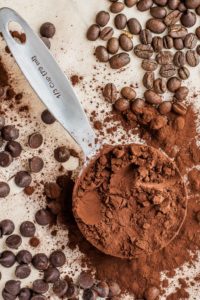 Dark chocolate is known for being bitter, and that is because it is less processed and therefore maintains more of its original flavors. Due to processing and addition of sugars into our food chain, most of us are not too acquainted with this flavor. Bitter is like a lost art, important in many cultures and comes with plenty of health benefits. Bitterness stimulates our digestive system, to produce and balance our stomach acid and digestive enzymes. Wouldn’t it be great if we became more familiar with this flavor? The bitterness of cocoa is due to “poly-phenols,” which are plant compounds that act as antioxidants, and include flavonoids – these flavonoids are responsible for the bitter flavor. Most of the bitterness is processed out, yet you can appreciate this favor in the darkest of dark chocolate such as 90% cocoa. Don’t despair – there are processing techniques and several Fair-Trade brands ensure that dark cacoa is smooth and decadent as well.
Dark chocolate is known for being bitter, and that is because it is less processed and therefore maintains more of its original flavors. Due to processing and addition of sugars into our food chain, most of us are not too acquainted with this flavor. Bitter is like a lost art, important in many cultures and comes with plenty of health benefits. Bitterness stimulates our digestive system, to produce and balance our stomach acid and digestive enzymes. Wouldn’t it be great if we became more familiar with this flavor? The bitterness of cocoa is due to “poly-phenols,” which are plant compounds that act as antioxidants, and include flavonoids – these flavonoids are responsible for the bitter flavor. Most of the bitterness is processed out, yet you can appreciate this favor in the darkest of dark chocolate such as 90% cocoa. Don’t despair – there are processing techniques and several Fair-Trade brands ensure that dark cacoa is smooth and decadent as well.
Other than flavonoids, chocolate also contains fatty acids, minerals, and fiber. The trouble is, we typically consume milk chocolate which contains less of the raw goods. Some companies even use “chocolate flavoring” to cut down on production costs, and while it may taste similar, the health benefits of these make-believe chocolates are absent. The minerals in cocoa beans include magnesium, copper and iron. Magnesium is a cofactor in protein synthesis, muscle relaxation, heart function, and energy production. Copper is required by the body for processes like glucose (sugar) metabolism, brain development and iron transport. Iron is needed to transfer oxygen from the lungs to the rest of the body. Per 100 grams of 70-85% dark chocolate, it provides 228mg of magnesium, 1.76mg of copper, and 11.9mg of iron. The bran of the cocoa bean is also high in fiber, nearly 2 grams per tablespoon, and consuming it has been shown to improve cholesterol.
Bitterness can be so sweet after all! February is American Heart Month and Valentine’s Day. Wouldn’t it be great to bring back health with a bit of dark chocolate?
Cryotherapy – Cool Trend or Real Science?
Wondering how to get an edge in athletic performance? Or perhaps, life in general?
This article will be a brief introduction to Cyrotherapy and a discussion of recent research, followed by a few practical tips on incorporating cold therapy should one choose to do so. So, what exactly is Cryotherapy? The word “cryo-“ comes from the Greek, meaning cold or icy, whereas, the word “therapy” simply refers to a medical treatment. Thus, cryotherapy is the use of very low temperatures as a form of medical treatment. Cyrotherapy can be used locally, as an ice pack on a recent injury or when liquid nitrogen is used to remove a wart, and it can be used on the whole body, such as when an athlete immerses into a freezing ice bath after a strenuous training session. Now at this point, one might be wondering, “Why in the world would someone dunk themselves into a freezing ice bath?” This is a very valid question, which leads to a little dive into understanding how cold impacts the human body and the respective research.
Cold can influence the body in many ways. The best way to understand this is to consider how all the hormones and biochemical processes going on continually within the body are simply responses to signals from the immediate environment. For example, a walk in the desert at mid-day when temperatures are over 110 degrees Fahrenheit will likely cause a person to sweat. This is the body realizing it is hot out, and in order to keep from overheating, sweat is created to cool down. Sweating is a way of transferring heat away from the body (via evaporation and convection). Likewise, when the body senses a dramatic drop in temperature, it sends a signal to the brain, which in turn, tells muscles to start shivering. Shivering creates heat and keeps the vital organs warm. This is only one of the many mechanisms the body does in response to cold. Let’s look at the research to see what other things the body is capable at doing in response to freezing temperatures.
A recent literature review1 of using whole-body cryotherapy (WBC) on athletes revealed the following:
• Whole body cryotherapy mobilizes white blood cells leading to overall reduced delayed onset of muscle soreness (DOMS).
• There are temporary changes in blood chemistry (hemoglobin, hematocrit, red blood cell count, erythropoietin), which all except erythropoietin, return back to baseline after 20 sessions of one 3-minute session per day. Erythropoietin remained elevated by 10.1% even after 30 sessions.
• WBC did not affect the resting metabolic rate and energy expenditure during exercise, but did have benefits on blood lipids (decreased triglycerides, LDL, total cholesterol; increased HDL). Lipid profile improvements were seen after 10-20 sessions of WBC.
• WBC helps to counteract the inflammation-induced bone resorption in endurance athletes by increasing osteoprotegerin.
• WBC reduces inflamation by influencing the immune system (increased IL-6, IL-10, IL-1Ra; reduced IL-1b, IL-1a). Results were mixed though, depending on fitness capacity.
• WBC exposure induces an oxidative stress but does not decrease the antioxidant capacity.
• WBC can have a positive effect on hormones (decreased cortisol, DHEA, estradiol; increased testosterone), albeit results varied among athlete groups.
• WBC may improve muscular tiredness, pain, and well-being after strenuous exercise.
Practical tips for incorporating whole-body cryotherapy:
• Check with your physician FIRST to make sure it is safe for you. Some medical conditions are a contraindication to cryotherapy.
• Learn about different types of cryotherapy offered in your area and choose a method that is carefully supervised.
• Determine your goal for using cryotherapy and when/how to best apply it in order to achieve those goals (pre-workout, post-workout, in morning or evening, and so on).
• Carefully cover sensitive areas to protect from injury due to freezing temperatures (ears, face, genitalia, hands, feet, etc).
• CAUTION when using liquid nitrogen chambers/saunas. Typically, liquid nitrogen is heavy and will stay close to the ground, but nonetheless, you will want to make sure you avoid breathing it. Wearing a surgical mask or mouth covering is also recommended to prevent moisture escaping from the mouth, leading to injury.
• Allow for adaptation time. Consider starting with short time periods (30sec-1min) and work up to longer times (2-3min), depending on the type of cryotherapy.
• Focus on breathing and mindset. Know that cold is a stressor to the body and focusing on breathing can help to overcome the stress. Box-breathing is a simple, yet effective strategy to reduce stress (inhale for 3 seconds, hold breath for 3 seconds, exhale for 3 seconds, then hold breath for 3 seconds – this completes 1 box. Repeat 3-5 times).
Until next time, stay safe and enjoy the cool benefits of cryotherapy!
1Lombardi G, Ziemann E, Banfi G. Whole-Body Cryotherapy in Athletes: From Therapy to Stimulation. An Updated Review of the Literature. Front Physiol. 2017 May 2;8:258. doi: 10.3389/fphys.2017.00258. PMID: 28512432; PMCID: PMC5411446

Dr. Shelah Deans graduated from Bastyr University with a doctorate in Naturopathic Medicine.
She is part of the team at Yellowstone Naturopathic Clinic as a first year resident, specializing in
both family and regenerative medicine. She also has over 15 years experience in the health and
fitness industry working with corporate executives, busy moms, and professional athletes in
achieving their goals. Her passion is practicing evidence-based, integrative medicine while
helping patients live their best life possible, preventing disease and mitigating pain.
New Technology Could Help Identify Fatty Liver Sooner
According to the American Liver Foundation, approximately 25% of the US population meets the criteria for a spectrum of conditions called non-alcoholic fatty liver disease (NAFLD). This spectrum ranges from benign deposition of fat in the liver to fibrosis (scarring) and cirrhosis (irreversible damage). Of the more than 100 million Americans who have NAFLD, approximately 80% have benign fatty liver and will not progress to the more serious stages of the disease. It is important to identify those who are at risk of progressing to the more serious stages of NAFLD, so an appropriate treatment course can be determined.
Fat deposition in the liver is multifactorial. One major factor is the body having too much fuel, in the form of sugars. These sugars are packaged in the form of fatty molecules called triglycerides and deposited in the liver tissue. As the condition progresses, the fatty deposition is accompanied by significant inflammation and insulin resistance, which is a hallmark of metabolic disease.
The major risk factors for developing NAFLD are obesity, type two diabetes, unmanaged celiac disease, insulin resistance, and elevated lipids. Other potential contributors are an imbalance in the gut microbiome and rapid weight loss. The most common cause of death in those with NAFLD is cardiovascular disease. This is not surprising, given the increased spilling of lipids into the blood and the presence of significant inflammation, which causes damage to the blood vessels.
The progression of NAFLD from fatty deposition to fibrosis, or scarring, is reversible, to a point. Making lifestyle changes like limiting added sugars and refined flours, increasing antioxidants in the diet through a variety of plant foods, and developing a regular exercise routine are some of the most important first steps. As imbalance in the gut microflora has been linked to NAFLD, maintaining healthy digestion and a vibrant microbiome is another target for treatment. Initiating treatments to prevent or manage diabetes or other underlying health conditions as early as possible may help prevent future complications from this disease.
Though it is increasingly common, NAFLD can be difficult to diagnose because a person can be symptom free for many years. In some instances, lab values may be abnormal, but the “gold standard” for diagnosing and evaluating NAFLD is a liver biopsy. As one might imagine, this procedure is invasive and expensive. MRI and ultrasound are also used but each has its own limitations in terms of cost and accuracy.
A newer type of ultrasound, called the FibroScan utilizes a technology called transient elastography. FibroScan is being used more commonly due to its ability to accurately measure fat in the liver and determine the degree of fibrosis. This is hugely important, as it is the best technology for identifying if a person simply has fatty deposition, or if he or she has a progressed stage of NAFLD and needs more aggressive treatment. The FibroScan takes a small amount of time, is noninvasive, and is very affordable.
NAFLD affects one in four Americans and the rates are increasing. Utilizing this minimally invasive and inexpensive technology, the FibroScan, is crucial for early diagnosis and management of this wide-reaching condition.
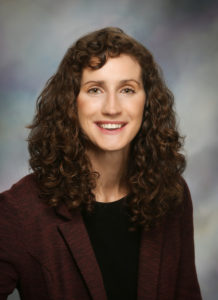
Dr. Melissa Manda is a naturopathic physician in her second year of residency at Yellowstone Naturopathic Clinic. She practices family medicine and is trained in mind-body medicine and biofeedback.
NATUROPATHIC MEDICINE: COMPREHENSIVE, INTEGRATED HEALTH CARE
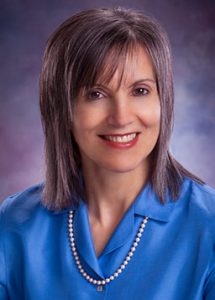
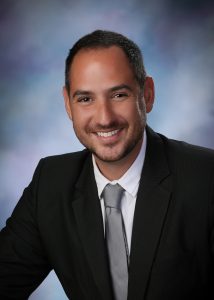
By: Dr. Margaret Beeson and Dr. Guy Citrin
Publishes in the Gazette 10/10/2017
The 5th Annual U.S. Naturopathic Medicine Week is from October 8-14, 2017.
Naturopathic medicine combines safe and effective traditional therapies with the most current advances in modern medicine. Naturopathic medicine is appropriate for the management of a broad range of health conditions affecting all people of all ages.
A licensed naturopathic physician (ND) attends a four-year, graduate-level naturopathic medical school and is educated in all of the same basic sciences as an MD, but also studies holistic and nontoxic approaches to therapy with a strong emphasis on disease prevention and optimizing wellness. In addition to a standard medical curriculum, the naturopathic physician also studies clinical nutrition, homeopathic medicine, botanical medicine, psychology, and counseling. A naturopathic physician takes rigorous professional board exams so that he or she may be licensed by a state or jurisdiction as a primary care general practice physician.
There are 7 fully accredited medical schools for naturopathic medicine in North America. To practice in a licensed state, such as Montana, and to be a member of the American Association of Naturopathic Medicine, an ND must have graduated from an accredited medical school and passed the national board exams. Currently, 20 states, the District of Columbia, and the United States territories of Puerto Rico and the United States Virgin Islands have licensing or registration laws for Naturopathic Doctors. The only major opposition to licensing efforts has been from practitioners that have received their education and degrees from non-accredited, usually mail order, programs. Our national association has been vigilant in support of licensure that requires a 4-year nationally accredited postgraduate medical education and professional board exams.
Licensed naturopathic physicians follow a set of principles that help us bring our shared vision to our patients. These principles are:
The Healing Power of Nature (Vis Medicatrix Naturae)
The healing power of nature is the inherent self-organizing and healing process of living systems, which establishes, maintains and restores health. Naturopathic medicine recognizes this healing process to be ordered and intelligent. It is the naturopathic physician’s role to support, facilitate and augment this process by identifying and removing obstacles to health and recovery, and by supporting the creation of a healthy internal and external environment.
Identify and Treat the Causes (Tolle Causam)
Illness does not occur without cause. Causes may originate in many areas. Underlying causes of illness and disease must be identified and removed before complete recovery can occur. Symptoms can be expressions of the body’s attempt to defend itself, to adapt and recover, to heal itself, or may be results of the causes of disease. The naturopathic physician seeks to treat the causes of disease, rather than to merely eliminate or suppress symptoms.
First Do No Harm (Primum Non Nocere)
Naturopathic physicians follow three precepts to avoid harming the patient:
- Naturopathic physicians utilize methods and medicinal substances, which minimize the risk of harmful effects, and apply the least possible force or intervention necessary to diagnose illness and restore health.
- Whenever possible the suppression of symptoms is avoided as suppression generally interferes with the healing process.
- Naturopathic physicians respect and work with the vis medicatrix naturae in diagnosis, treatment and counseling, for if this self-healing process is not respected the patient may be harmed.
Doctor As Teacher (Docere)
The original meaning of the word “doctor” is teacher. A principal objective of naturopathic medicine is to educate the patient and emphasize self-responsibility for health. Naturopathic physicians also recognize and employ the therapeutic potential of the doctor-patient relationship.
Treat the Whole Person
Health and disease results from a complex of physical, mental, emotional, genetic, environmental, social and other factors. Since total health also includes spiritual health, naturopathic physicians encourage individuals to pursue their personal spiritual development. Naturopathic medicine recognizes the harmonious functioning of all aspects of the individual as being essential to health. The complex nature of health and disease requires a personalized and comprehensive approach to diagnosis and treatment. Naturopathic physicians treat the whole person taking all of these factors into account.
Prevention
Naturopathic medical colleges emphasize the study of health as well as disease. The prevention of disease and the attainment of optimal health in patients are primary objectives of naturopathic medicine. In practice, these objectives are accomplished through education and the promotion of healthy ways of living. Naturopathic physicians assess risk factors, heredity and susceptibility to disease, and make appropriate interventions in partnership with their patients to prevent illness. Naturopathic medicine asserts that one cannot be healthy in an unhealthy environment and is committed to the creation of a world in which humanity may thrive.
Naturopathic Methods
Naturopathic medicine is defined primarily by its fundamental principles. Methods and modalities are selected and applied based upon these principles in relationship to the individual needs of each patient. Diagnostic and therapeutic methods are selected from various sources and systems and will continue to evolve with the progress of knowledge.
Naturopathic Practice
Naturopathic practice includes the following diagnostic and treatment modalities: utilization of all methods of clinical and laboratory diagnostic testing including diagnostic radiology and other imaging techniques; nutritional medicine, dietetics and therapeutic fasting; medicines of mineral, animal and botanical origin; hygiene and public health measures; homeopathy; acupuncture; Chinese medicine; counseling; minor surgery and naturopathic obstetrics (natural childbirth), naturopathic physical medicine including naturopathic manipulative therapies; the use of hydrotherapy; ultrasound, and therapeutic exercise. While most ND’s are general practice, primary care physicians, many naturopathic physicians specialize in specific areas such as women’s care or physical medicine. The practice of Acupuncture and/or Chinese medicine and naturopathic obstetrics requires additional education and licensure. Homeopathy is a modality used by practitioners of many disciplines, with varying expertise and by many ND’s.
Naturopathic Medicine is not “alternative” medicine but truly integrative medicine providing a comprehensive and nonexclusive approach to the best of traditional and conventional medicine.
Naturopathic physicians acknowledge that patients often know what is wrong with them and need health care providers to listen carefully in order to help them interpret their symptoms and then facilitate an appropriate approach to wellness. ND’s welcome and encourage patients to become educated and involved in their health care decisions because experience has shown that patients are then much more successful in attaining their health goals.
Summer Body Care
Summer Body Care

Audrey Schenewerk, ND
Summer is a time for projects, like moving, yard work, home improvements, etc. These activities can be fun, therapeutic and necessary for life; Here are some important tips for protecting your body while engaging in these activities.
The garden that commands your attention may also be a bit hard on your hands, wrists and knees while you are kneeling by its side. Consider these ideas to minimize muscle fatigue and soreness:
- Change positions frequently, squatting, kneeling, sitting, bending for long periods of time or repeatedly can be ergonomically unfavorable
- When kneeling consider pads under knees and rear for support
- Alternate hands when weeding or digging to prevent aggravation of overuse injuries
- Try to rotate between types of gardening activities, allowing your body some recovery from repetitive motion
- Frequent breaks with stretching and hydration
Home improvements like painting, replacing fixtures and appliances may put significant physical demands on your body; here are several ideas to help you finish your projects feeling fine:
- Again, changing positions or alternate repetitive motions as often as possible
- Frequent breaks with stretching and hydration
- Job share with friends and family, such as, you paint for them and they will help you move the kitchen appliances
- Maintaining an overall active lifestyle will help your body adapt to the demands of your projects
Moving can be annoying with the packing and unpacking, and the inevitable injuries received as you maneuver the dresser down the stairs or lift heavy boxes. Take a moment to protect your body with these ideasin addition to those mentioned above:
- When packing use the smallest boxes for the heavier items
- Furniture dollies or straps can really help your body manage oversized furniture safely
- Use thigh and glute muscles to lift, rather than your back
By the end of the weekend when your projects are complete, or at least for now you may be feeling the effects of your labors. The aches and pain may serve as a reminder to try some of the ideas above, next time, and focus on a little tender loving care now. Some ideas to minimize the aches and pains of summer projects include:
- Epsom salt baths to heal overused or injured muscles
- Ice, heat, or contrast hydrotherapy (alternating hot with cold)
- Good restorative sleep
- Anti-inflammatory supplements and medications, when appropriate
- Massage therapy or other manual therapies
- Physical therapy
- Chiropractic care
- Evaluation by your licensed medical provider as necessary
Please be sure to find the care you need so next summer your body will be in top shape to complete the next round of projects.
How to Avoid Known Cancer Causing Agents
How to Avoid Known Cancer Causing Agents

Danielle Phillips-Dorsett, ND
There is much in the news, from time to time, about chemicals that are associated with cancer and this may be confusing and scary for you. Much is unknown about how cancers develop in the body; however, there are substances and exposures that are known to cause cancer in humans.
These are documented and reported by the National Toxicology Program that publishes the Report on Carcinogens, released by the U.S. Department of Health and Human Services. Below is a summary of how to protect yourself and family from a few on the list, including trichloroethylene, which was just added last year.
Industrial solvents:
- Trichloroethylene, benzene and many other industrial solvents are listed by the National Toxicology Program as known carcinogens. Exposure has been linked with cancers of the liver, lungs, digestive tract, lymphoma and leukemia. Solvents are used in numerous products to remove grease in the automotive, manufacturing and even home care industries. It may come as a surprise that in our fair city of Billings, as in many cities, there are a substantial number of companies where workers need to be well-informed of occupational exposures to these carcinogens. Use of PPE (personal protective equipment) is required for good reason. It is reasonable to request that management provide safer cleaners when available. Solvents are the cause of the superfund site just outside Billings, where a now contained solvent plume contaminated groundwater.
Radon:
- Radon is a gas released from rock and can build up in the home if not properly vented. Radon is the second leading cause of lung cancer after smoking. If your house has not been tested for radon, you will want to have it tested because the good news is you can do something about it if levels are unsafely elevated. The longer you are exposed to high levels of radon, the greater risk you are of developing cancer. And, if you are a cigarette smoker the risk is much higher when exposed to elevated levels of radon. If you are a renter, ask your landlord about radon levels, especially if you plan to live in the home long-term. There are several companies in Billings that can test this and most home inspectors will add this to their report.
Styrene:
- Styrene is a chemical used in the making of plastics and rubber and is also inhaled in cigarette smoke. This chemical has been linked to leukemia, lymphomas, and pancreatic and esophageal cancers. Since it can be inhaled or absorbed through the skin, anyone working with this material should wear gloves, respirators and work in a well ventilated area. Some Styrofoam containers have been determined to be microwave safe, with a non-significant amount of polystyrene released into the contents. AVOID using them to hold hot liquids or reheat food if they are not labeled as such.
These are just a few of the long list the National Institute of Health Toxicology Program has put together. For the complete list of known human carcinogens go to their website at www.ntp.niehs.nih.gov
“Do the best you can until you know better.
Then when you know better, do better.”
–Maya Angelou
Sun Exposure & Skin Protection
Gazette Article: Sun Exposure & Skin Protection

Jennifer Krieger, ND
With the warm weather upon us, many Montanans answer summer’s call by spending time in the great outdoors under the sun. However, repeated sun exposure has been linked to painful sunburns, skin cancer and is the number one cause of premature aging. It is important to protect your skin from the harmful and painful effects of the sun by following the simple preventative steps listed below.
Staying out of the sun when it’s the strongest, wearing protective clothing, and putting on sunscreen are your best bets to avoiding sunburns. Reduce your time in direct sunlight – the sun is strongest between 10:00 am and 4:00 pm, and even cloudy skies can cause sunburns because up to 80% of the sun’s rays can pass through clouds. Protective clothing such as long sleeved shirts and pants, sunglasses, large brimmed hats, and carrying an umbrella for instant shade offer protection too. There are even sun protective swimwear and clothing available with SPF (sun protective factor) built in. Make sure your sunglasses have ultraviolent lenses to protect your eyes. Polarized sunglasses are best if you are exposed to frequent high glare situations, such as spending excessive time on the water.
Earth friendly and natural sunscreens are your best options for sunscreens since many contain harmful chemicals that are easily absorbed through the skin. Aim for a sunscreen that has a SPF of at least 15 or more. Sunscreens that are labeled “wide spectrum” or “water resistant” offer more protection. Be diligent though, and re-apply sunscreen every two hours or whenever you are exposed to water or are excessively sweating. Don’t forget about your lips either, as they contain minute amounts of melanin (the skin’s natural protective pigment from light) and are especially susceptible to burns. Try to find a lip balm that contains no gloss and has a SPF of 15 or more.
Check the Environmental Working Group’s website at www.ewg.org/sunscreen/ for their 2017 Guide to Sunscreens to determine how to select the safest and most effective sunscreen for your outdoor needs.
There are even dietary options to help protect your skin from the sun’s rays. Adding tomatoes to your diet has been proven beneficial since tomatoes contain high levels of the antioxidant lycopene. Lycopene has been shown to be effective in reducing the harmful effects of sun exposure in controlled trials. So add in tomatoes and tomato based drinks into your diet for an extra sun protective boost.
Adding vitamin C and vitamin E for short periods of time have been shown to protect the skin from sun damage too. These vitamins are powerful antioxidants that can protect the skin because they have the ability to reduce the free radicals produced by the sun’s ultraviolet rays. Aim for a combination of 2,000 mg of vitamin C and 1,000 IU of vitamin E daily for a short period of time (four to six weeks).
So despite your best efforts to prevent sunburns, sometimes Mother Nature still wins. The expressed juice of the aloe vera plant is especially beneficial for soothing and cooling sunburns and reduces redness of the skin when applied topically to broken or unbroken skin. Apply aloe vera to sunburns and let dry. Re-apply as often as needed to help heal your burnt skin. Avoid direct sunlight and let your skin heal.
As you can see there are many ways to take a proactive approach to help protect your skin. Enjoy your fun in the sun, Billings!
References are available upon request.

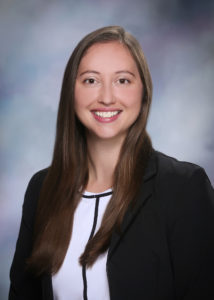
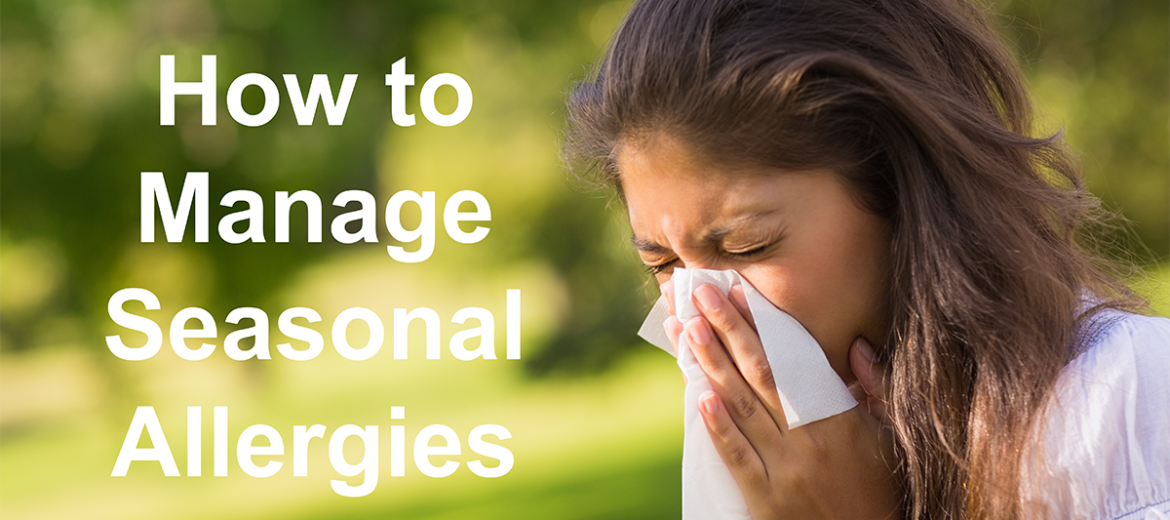
Clinic